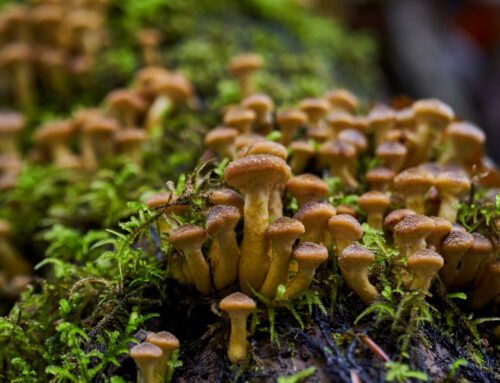Raw materials for fragrances and aromas for parfums, cosmetics, food and beverage are either extracted from natural sources such as plants or animals, or they are chemically synthesized.
Why, in a longer term, both of these approaches are not sustainable?
First, we need to remember that all of our natural resources are limited.
Second, with the climate changes and the growth of human population, natural resources are becoming more and more scarce.
Couple of years ago, due to an extreme weather in Indonesia, almost all Patchouli plants (from which the famous Patchouli fragrance oil is made) were destroyed. By the way, did you know that only one percent of the world vanilla flavor comes from the natural sources? All the rest is chemically synthesized.
On the other hand, chemical synthesis of tastes and fragrances relies heavily on the fossil fuels. Around 95% of artificially produced flavors and fragrances originate from petroleum as a source. In addition, chemically synthesized flavors are not always identical to their natural products, they are negatively perceived by consumers and some of them can cause allergies or even more serious health conditions 1,2.
How microbiomes can compensate for the global deficit of aromas and fragrances?
As any microbiologist knows, many microorganisms have typical smell – some attractive, some repellent. A culture-plate with the bacterium Pseudomonas aeruginosa and its fruity-like scent you might like to open. A culture of Escherichia coli you better keep away from your nose.
Industries such as dairy, wine, meat or seafood are very interested in microbially produced volatile flavor compounds or VFCs. Cheese and wine lovers will know exactly what am I talking about. As a bonus, beyond smell and taste, some microbial VFCs also have anti-oxidant, anti-inflammatory and other health benefits.
In the recent years, due to their higher yields and quality, climate-neutrality and rising oil prices, microbially-produced tastes and fragrances are becoming an alternative solution in the food-, beverage- and cosmetic industry. Here, we distinguish between products from natural microbial strains or genetically engineered ones. To illustrate the growth rate in this sector, two years ago, global market share of the biotech-produced vanillin was 3%. In 2023 it is projected to 13% 2–4.
How the microbiomes can change the smell and taste of plants?
So far, we discussed how microbiomes influence human body odor, tweak our sensation of smell and taste or how they produce flavors and fragrances. In addition, microbiomes seem to influence properties of the fragrances and aromas produced by plants per se. For example, researchers have found that root oil fragrance of the Vetiver plant (used for cosmetics and parfums) depends on the bacteria living on it. Indeed, the root-colonizing bacteria use the components of the root oil as its food source, thereby changing its composition. Furthermore, geography and soil microbiome also play an important role 5. In the viticulture, the concept of influence of the specific land location or the growing site (French – “terroir”) on the wine quality has been well known. In a study on wine plants, the highest microbial diversity between the same plant parts on different geographic locations was found exactly around the root – in the soil microbiome 6. This opens new possibilities to achieve the desired fragrance or taste properties by precise manipulation of the microbiomes – in the laboratory and directly in the soil.
Literature:
- Gupta, C. A Biotechnological Approach to Microbial Based Perfumes and Flavours. JMEN 2, (2015).
- Román, S., Sánchez-Siles, L. M. & Siegrist, M. The importance of food naturalness for consumers: Results of a systematic review. Trends in Food Science & Technology 67, 44–57 (2017).
- Kumar Verma, D. et al. Recent trends in microbial flavour Compounds: A review on Chemistry, synthesis mechanism and their application in food. Saudi Journal of Biological Sciences 29, 1565–1576 (2022).
- Paulino, B. N. et al. Recent advances in the microbial and enzymatic production of aroma compounds. Current Opinion in Food Science 37, 98–106 (2021).
- Del Giudice, L. et al. The microbial community of Vetiver root and its involvement into essential oil biogenesis: Vetiver root bacteria and essential oil biogenesis. Environmental Microbiology 10, 2824–2841 (2008).
- Zarraonaindia, I. et al. The Soil Microbiome Influences Grapevine-Associated Microbiota. mBio 6, e02527-14 (2015).





